Cholera—a curable, preventable disease—did not exist in Haiti before the earthquake of 2010. The GHESKIO health center asked MASS Design Group to design a permanent facility to replace temporary cholera treatment tents.
The Cholera Treatment Center creates its own water and sanitation infrastructure. A rainwater catchment system collects and filters water. The building can sanitize more than 250,000 gallons of wastewater a year, preventing sewage from contaminating the water table.
Naturally daylit and ventilated, the Cholera Treatment Center helps sick patients heal with dignity. All building materials were chosen for their durability, infection-resistant properties, and/or ability to withstand extensive washing with chlorine.
Content from the exhibition Design and Healing: Creative Responses to Epidemics, curated by MASS Design Group and Cooper Hewitt, Smithsonian Design Museum
+++++++++++++++++++++++++++++++++++++++++++++
GHESKIO Cholera Treatment Center, Port-au-Prince, Haiti, 2015
Architectural and Furniture Design: MASS Design Group (Boston, Massachusetts, USA, founded 2008); Partner: Les Centres GHESKIO; MASS Design Group Project Manager: Andrea Panizzo; Structural Engineer: Matt Sisul, YCF Group s.a.; Mechanical/Electrical/Plumbing; Engineer: Mazzetti; Lighting: LAM Partners; Civil Engineer: Fall Creek Engineering, Inc.; Facade Design: Nathan King and Jonathan Grinham with the Virginia Tech School of Architecture + Design’s Center for Design Research; Contractor: YCF Group and TECINA s.a.
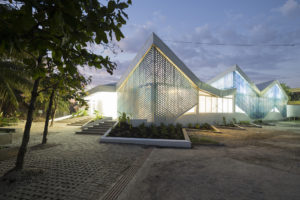
Photograph © Iwan Baan
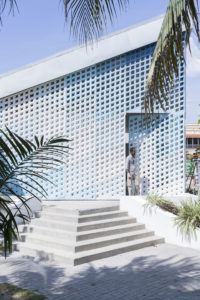
Photograph © Iwan Baan
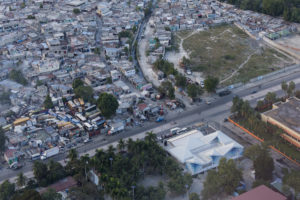
Photograph © Iwan Baan
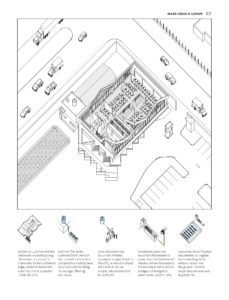
Drawing: MASS Design Group (Boston, Massachusetts, USA, founded 2008)
+++++++++++++++++++++++++++++++++++++++++++++
Sanitation Access in Port-au-Prince, Haiti
This map shows areas of the city in the greatest need of sanitation support.
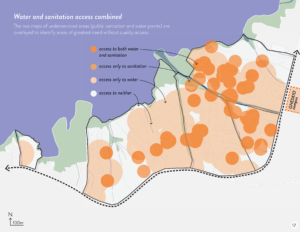
Map: MASS Design Group (Boston, Massachusetts, USA, founded 2008)
+++++++++++++++++++++++++++++++++++++++++++++
Model, GHESKIO Cholera Treatment Center, Port-au-Prince, Haiti, 2021
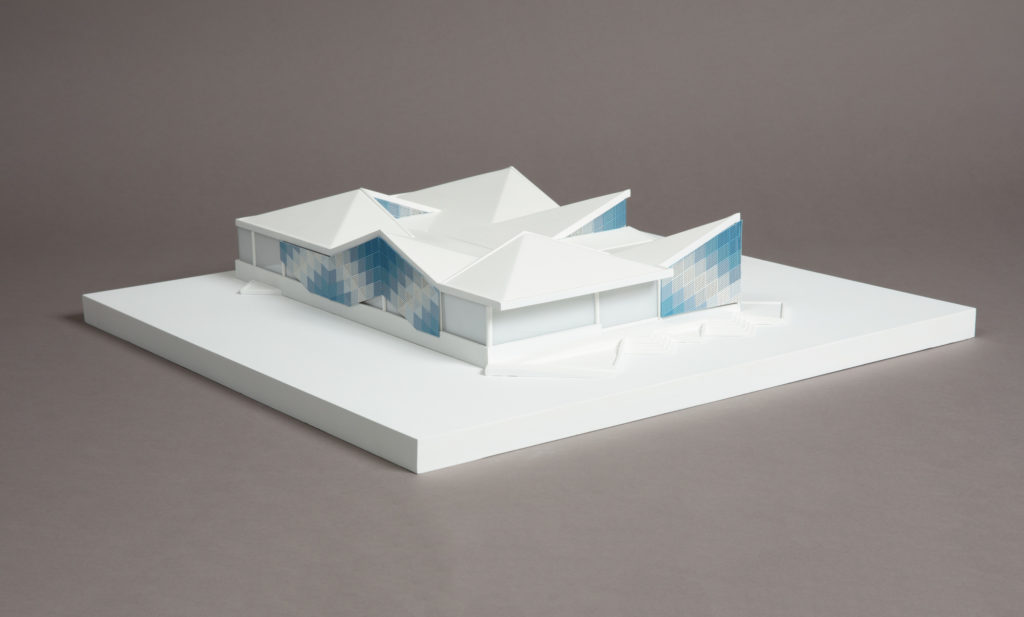
MASS Design Group (Boston, Massachusetts, USA, founded 2008); Model by GPI Models; Plastic modeling board, polycarbonate, acrylic; Courtesy of MASS Design Group
+++++++++++++++++++++++++++++++++++++++++++++
GHESKIO Cholera Cot, 2010
MASS worked with Herman Miller and GHESKIO to design innovative seats and beds for cholera patients, to dignify the patient experience. The bedding fabric can be removed for cleaning, allowing it to be reused safely. Fabricated locally by Haitian metalworkers, tailors, and fiberglass professionals, the furniture was designed to be comfortable, durable, safe, and hygienic.
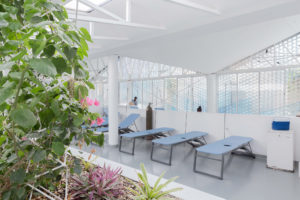
MASS Design Group (Boston, Massachusetts, USA, founded 2008) with Herman Miller (Zeeland, Michigan, USA, founded 1905); Plastic, metal; Courtesy of MASS Design Group